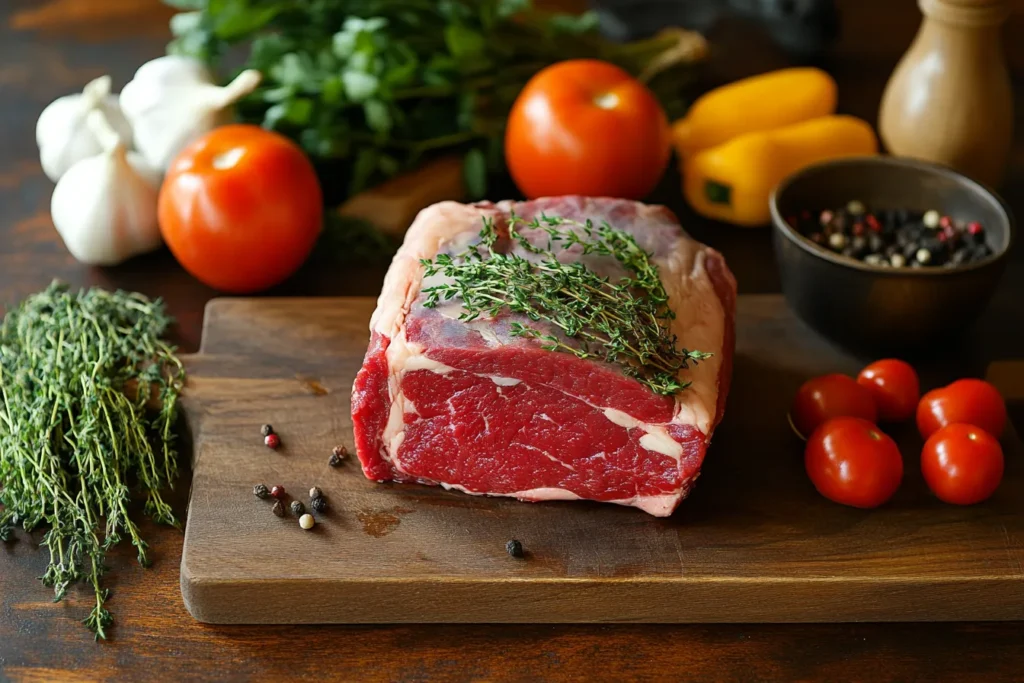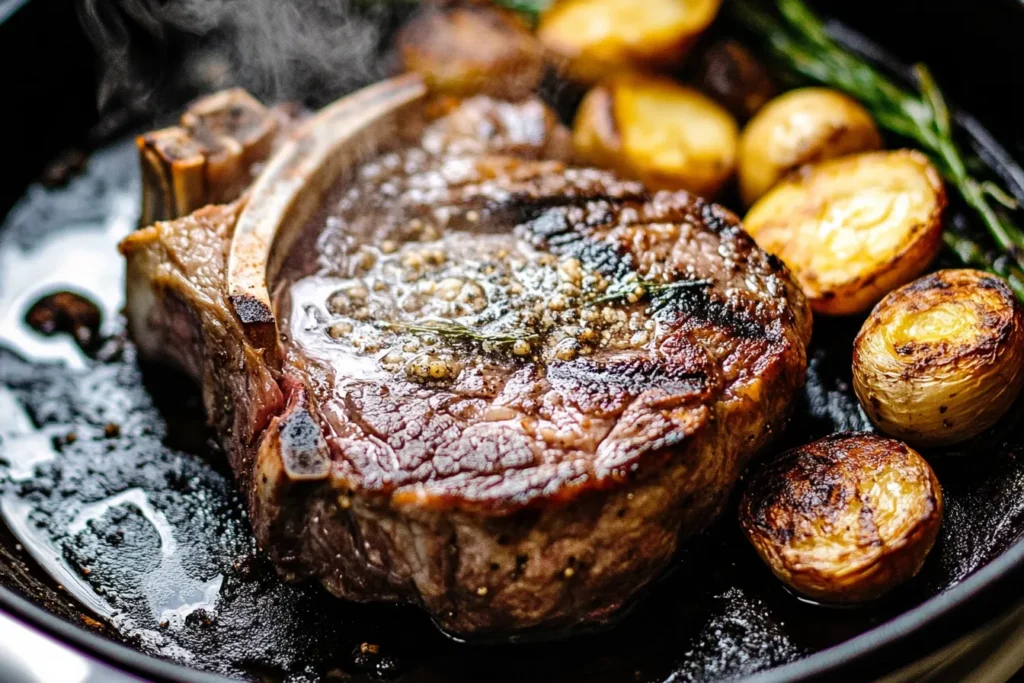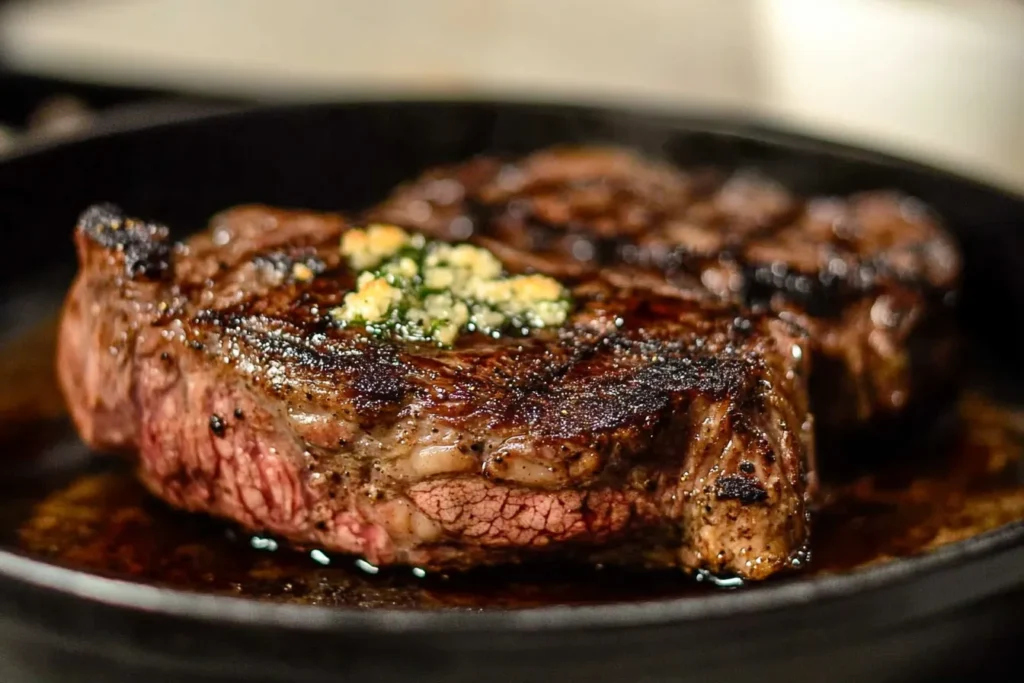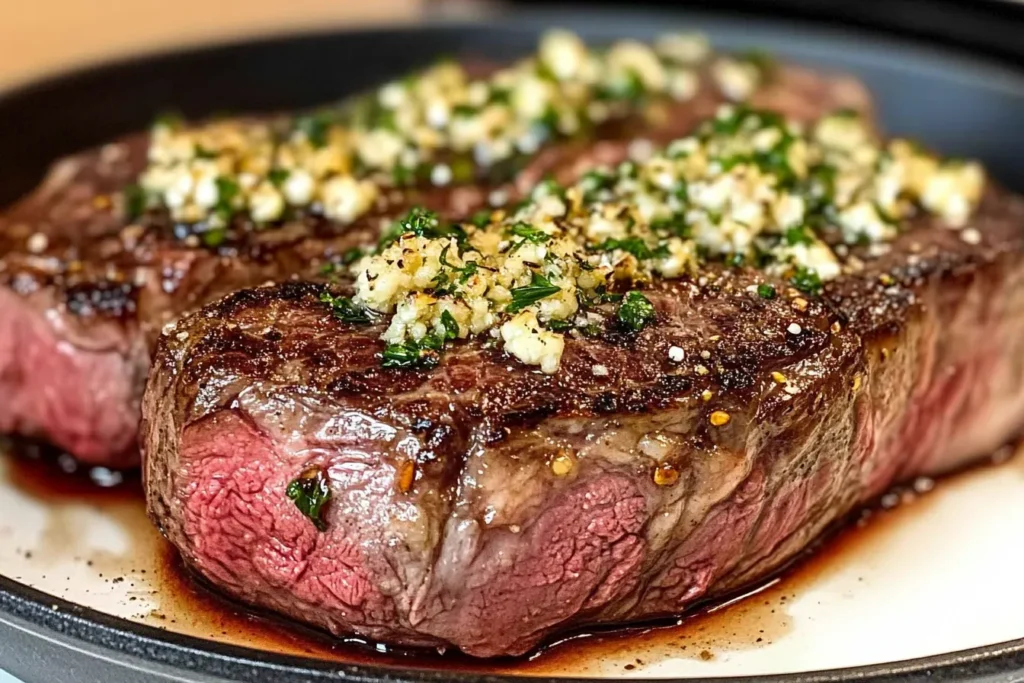Table of Contents
Should I sear a ribeye roast before cooking? This is a question that often sparks debate among home cooks and professional chefs alike. The answer, while seemingly simple, is nuanced and depends on the desired outcome and cooking method. Searing a ribeye roast can significantly enhance its flavor and texture, creating a beautiful crust that seals in juices and adds depth to the overall eating experience (Should I sear a ribeye roast before cooking?).
The Ultimate Guide to Searing a Ribeye Roast
Searing, also known as the Maillard reaction, is a chemical process that occurs when amino acids and reducing sugars are heated, creating complex flavors and aromas. Should I sear a ribeye roast before cooking? The answer hinges on understanding this process and how it impacts the final product. Searing creates a desirable brown crust on the surface of the meat, boosting flavor and visual appeal (Should I sear a ribeye roast before cooking?).
Benefits of Searing a Ribeye Roast
Searing a ribeye roast before cooking provides several significant benefits. The most notable is the development of a rich, savory crust. This crust enhances the overall flavor profile of the roast, adding complexity and depth.
Furthermore, searing helps to seal in the juices, contributing to a more tender and succulent final product. A seared crust acts as a barrier, preventing moisture loss during the roasting process. This is crucial for maintaining the optimal texture of the ribeye (Should I sear a ribeye roast before cooking?).

Drawbacks of Skipping the Sear
Choosing not to sear a ribeye roast beforehand can result in a less flavorful and visually appealing dish. Without the Maillard reaction, the roast will lack the characteristic crust and depth of flavor that searing provides (Should I sear a ribeye roast before cooking?).
Additionally, skipping the sear can lead to a roast that is less juicy and more prone to drying out during cooking. The absence of a seared crust means less protection against moisture loss.
Searing Methods: Choosing What’s Right for You
There are several methods you can use to sear a ribeye roast, each with its own advantages and disadvantages. The most common methods include pan-searing, oven-searing, and using a grill. Choosing the right method for your needs is crucial for achieving the best results.
Detailed Searing Techniques for Ribeye Roast Perfection
Searing a ribeye roast can be achieved in various ways. Let’s explore some of the most effective techniques for delivering optimal flavor and texture (Should I sear a ribeye roast before cooking?).
Pan-Searing: A Classic Approach
Pan-searing is a popular and effective method for achieving a beautiful sear. This technique involves using a heavy-bottomed skillet, preferably cast iron, to evenly heat the surface of the roast (Should I sear a ribeye roast before cooking?).
To pan-sear, begin by heating a small amount of oil in the skillet over high heat until it is smoking hot. Carefully place the ribeye roast in the skillet and sear for 2-3 minutes per side, until a deep brown crust forms. Ensure all sides of the roast are seared for even browning.
Oven-Searing: A Convenient Alternative
Oven-searing offers a convenient and less messy alternative to pan-searing. This technique involves placing the ribeye roast in a preheated oven at a high temperature (usually 450-500°F) for a short period (Should I sear a ribeye roast before cooking?).
To oven-sear, place the roast on a roasting rack in a baking pan. Preheat the oven to the desired temperature and place the roast inside. Sear for 15-20 minutes, or until a deep brown crust forms. Then, reduce the oven temperature and continue roasting to the desired internal temperature.
Grill-Searing: Smoky Flavor Enhancement
Grill-searing is a great option for those who enjoy the smoky flavor that a grill imparts. This technique involves using a hot grill to sear the surface of the ribeye roast.
To grill-sear, preheat the grill to high heat. Place the ribeye roast directly on the grill grates and sear for 2-3 minutes per side, until a deep brown crust forms. Be careful not to overcook the roast during this process (Should I sear a ribeye roast before cooking?).

Tips for Searing Success
Several tips can help you achieve the perfect sear every time. Ensuring the ribeye roast is dry before searing is crucial. Moisture can inhibit the Maillard reaction, preventing the formation of a proper crust.
Using high heat is also essential for searing. A hot surface ensures rapid browning and flavor development. Additionally, avoid overcrowding the pan or grill, as this can lower the temperature and prevent proper searing (Should I sear a ribeye roast before cooking?).
Should I Sear a Ribeye Roast Before Cooking? Exploring the Impact on Juiciness
One of the primary reasons people choose to sear a ribeye roast is to enhance its juiciness. Searing creates a barrier that helps retain moisture during the roasting process.
Retaining Moisture Through Searing
When the surface of a ribeye roast is seared, the proteins on the exterior coagulate, forming a barrier that reduces moisture loss. This is especially important for larger cuts of meat that require longer cooking times (Should I sear a ribeye roast before cooking?).
Should I sear a ribeye roast before cooking? The answer is yes if juiciness is a priority. The seared crust acts as a shield, helping to keep the interior of the roast tender and succulent.
Comparing Juiciness: Seared vs. Unseared
Ribeye roasts that have been seared tend to be more tender and juicy compared to those that have not. The seared crust traps moisture, resulting in a more flavorful and satisfying eating experience.
Unseared roasts, on the other hand, are more likely to dry out during cooking. The absence of a seared crust means that moisture can easily escape, leading to a less desirable texture.
Factors to Consider: Making the Right Choice
Several factors should be considered when deciding whether or not to sear a ribeye roast before cooking. These factors include the size of the roast, the cooking method, and personal preferences (Should I sear a ribeye roast before cooking?).
Size of the Roast
The size of the ribeye roast can influence whether or not searing is necessary. Smaller roasts may not benefit as much from searing, as they cook more quickly and are less prone to drying out.
Larger roasts, however, can greatly benefit from searing. The seared crust provides extra protection against moisture loss, ensuring a more tender and juicy final product.
Cooking Method Implications
The chosen cooking method can also impact the decision to sear a ribeye roast. Roasting at high temperatures may negate the need for searing, as the high heat can create a crust on its own.
However, for low-and-slow cooking methods, searing is highly recommended. The seared crust provides essential protection against moisture loss during the prolonged cooking time.

Personal Taste Preferences
Ultimately, the decision to sear a ribeye roast is a matter of personal preference. Some people prefer the intense flavor and texture of a seared crust, while others may prefer a more subtle flavor profile.
Experimenting with different searing techniques and cooking methods can help you determine what works best for your taste. There is no right or wrong answer, so feel free to explore and find your preferred method.
The 7 Secret Keys to Searing Ribeye Roasts Successfully
To guarantee exceptional results when searing ribeye roasts, bear in mind these 7 secret keys.
- Dry the Roast: Pat the ribeye roast dry with paper towels before searing to promote browning.
- Use High Heat: Employ high heat to achieve a deep, flavorful crust.
- Choose the Right Oil: Select an oil with a high smoke point, such as avocado or grapeseed oil.
- Don’t Overcrowd: Avoid overcrowding the pan or grill to maintain optimal searing temperature.
- Sear All Sides: Ensure all sides of the ribeye roast are seared for even browning.
- Use a Meat Thermometer: Use a meat thermometer to accurately monitor the internal temperature of the roast.
- Let it Rest: Allow the ribeye roast to rest for at least 10-15 minutes before slicing and serving.
FAQ
ribeye roast recipe
There are countless ribeye roast recipes available online. A classic approach involves seasoning the roast with salt, pepper, and herbs, searing it on all sides, and then roasting it in the oven until it reaches the desired internal temperature. The key to a great ribeye roast is using high-quality meat and accurately monitoring the internal temperature.
Is a ribeye roast the same thing as prime rib?
The terms “ribeye roast” and “prime rib” are often used interchangeably, but technically, they are not exactly the same. Prime rib refers to a rib roast that has been graded “prime” by the USDA. Ribeye roast, on the other hand, can refer to any rib roast, regardless of its grade.
Is ribeye good for roasting?
Yes, ribeye is an excellent choice for roasting. Its generous marbling and rich flavor make it ideal for this cooking method. Roasting a ribeye allows the fat to render, resulting in a tender and juicy final product.
How is ribeye best cooked?
Ribeye can be cooked in a variety of ways, including grilling, pan-searing, and roasting. Each method offers a unique flavor and texture profile. Ultimately, the best way to cook ribeye depends on personal preference. Many prefer roasting because it yields a large quantity of meat, perfect for special occasions.

